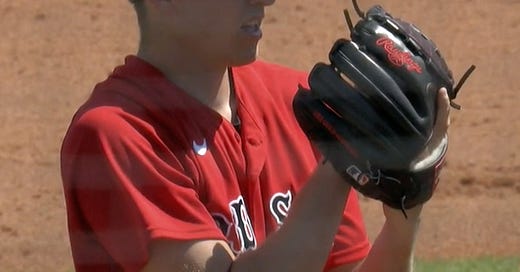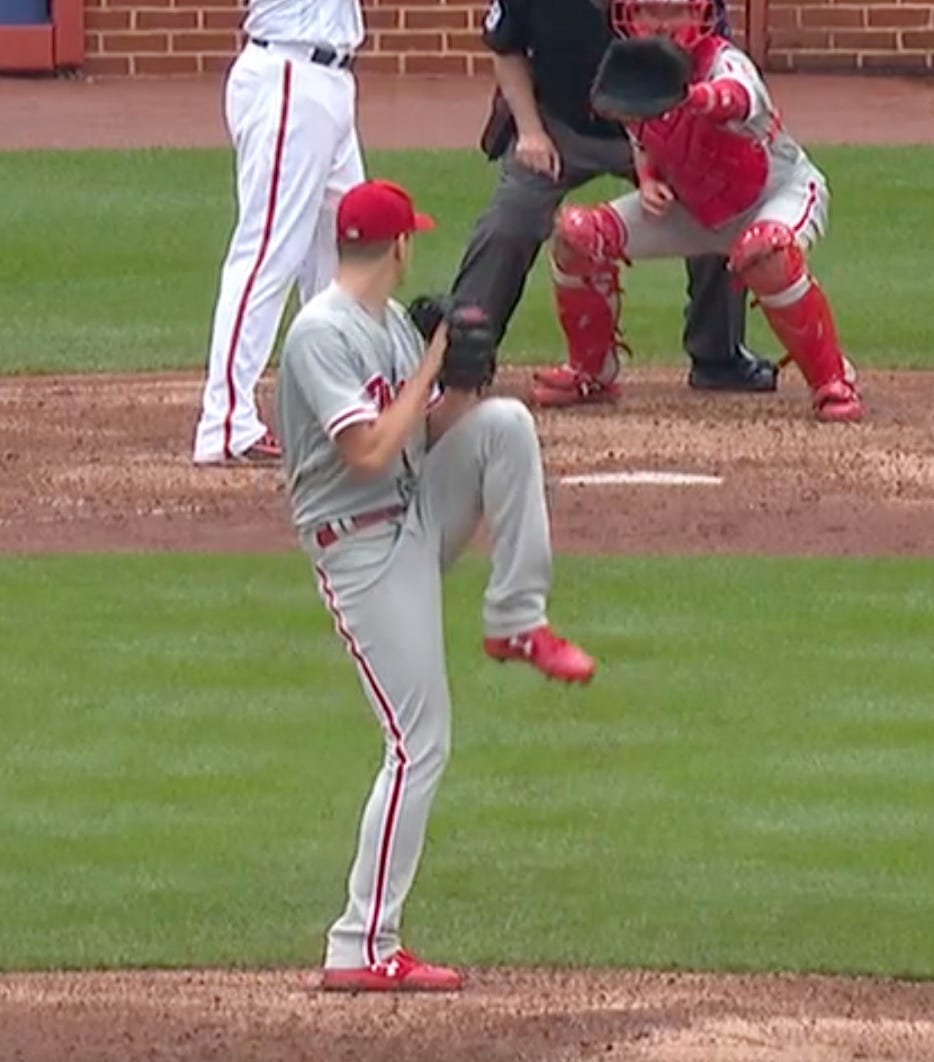With last season winding down and Boston mired in last place, the front office brought two starting pitchers up from the alternate site. Former first round pick Tanner Houck started three games and dazzled, with a 0.53 ERA over 17 innings. It seemed the breakout performance from a starting pitching prospect Red Sox fans had been waiting for. Time to leap in the air, and who cares where that green beer lands when you come back down!
Houck’s spring training has brought us collectively back to Earth a bit by displaying a more realistic or perhaps pessimistic view of the pitcher, or, to continue the metaphor, reminding us where green beer goes after gravity takes hold (answer: your head and, somehow, your underwear). Houck has struggled, walking six and giving up three runs in 3.2 innings. He wasn’t likely to win a starting spot out of camp but more of what he showed at the end of last season would’ve at least forced the issue a bit. Instead we’re left waiting for the Triple-A season to start (when ever that turns out to be) to see how Houck adjusts to his rough spring.
The focus on Houck though has obscured a different new Red Sox starter, Nick Pivetta. After Pivetta came over from Philadelphia at the trade deadline as part of the return for Brandon Workman and Heath Hembree, he was sent, not to Boston, but to the alternate site, to work with the Red Sox player development staff. Pivetta didn’t make his first start for the Red Sox until a month after the trade. While his two starts with Boston weren’t as exciting as Houck’s three were, Pivetta did pitch well. He struck out 13 in 10 innings with five walks and two runs. That’s not dominance, but it’s a heck of a lot better than the 5.38 ERA he’d put up in 2019, or the 15.88 ERA he’d put up in 5.2 innings with the Phillies in 2020 before being traded.
Pivetta’s problem has never been his stuff. His fastball velocity has always been around the 75th percentile for starting pitchers, and the spin rate on his curveball (meaning, effectively, how hard it breaks) has always been elite, better than more than 90 percent of the other starters in baseball. The problem has always been just about everything else. His ERA in almost 400 innings with the Phillies was 5.50, 27 percent below league average. The excellent velo and spin haven’t translated into success on the mound.
From the Red Sox perspective though, Pivetta is a starting pitcher starter kit. He’s got the things you can’t teach. He throws hard, his pitches have movement, and he can maintain that velocity through games, assuming, you know, he doesn’t get knocked out of the game for other reasons. Unlike Houck, Pivetta’s success late in 2020 has continued into spring. In nine innings, Pivetta has struck out eight, walked one, and given up three runs, including one homer. That might not be vintage Chris Sale, but it’ll do nicely for someone in the back of the rotation.
So the questions are, is there something different about Nick Pivetta now compared to when he was in Philadephia, and if so, what is it? Put another way, why is he having success? Did the Red Sox do at the alternate site to help Pivetta unlock success on the mound, or is this all just a small sample size mirage?
To answer this question I went back and looked at just about every stat I could find, but the problem ultimately is that this exercise boils down to comparing about 400 innings Pivetta threw over four seasons to 10 innings he threw at the end of last year. I don’t think there’s really any reasonable way to get anything out of doing that.
Still searching for answers, I looked at video of Pivetta pitching for the Phillies and compared it to him pitching for the Red Sox, both last season and in spring training. What did I find? I’d love to reveal the big answer here (“Now he throws with his eyes open!”) but the truth is I didn’t find much beyond that Pivetta seems inconsistent in his mechanics. Sometimes he kinda leans back when he throws ever so slightly, sometimes he doesn’t. Sometimes he turns his back to the batter ever so slightly, and sometimes he doesn’t. Sometimes his motion causes him to fall off to the left after releasing the pitch, and sometimes it doesn’t. Sometimes his lift leg crosses back over the rubber, and sometimes it doesn’t. You would think this would make it easy to figure out what he was doing differently, except all of the above are true for his time with the Phillies and his limited time with the Red Sox.
There are probably mechanical tweaks he’s working on that I just didn’t pick up on, but either way, the tweaks will be in service of helping Pivetta improve his command, something he has managed to improve in his extremely short time in a Red Sox uniform. The key to Pivetta being any kind of decent starting pitcher will be his ability to throw his pitches where he wants them, at least more than he has been able to do in the past. His stuff is good, but it’s not good enough that he can leave fastballs out over the plate with any consistency, or miss location with his breaking stuff repeatedly.
So far so good for Pivetta this spring, at least results-wise. Whether it’s something mechanical, improved confidence as he has hinted at in interviews, or a combination of the two, we’re going to get a chance to see this play out. Pivetta will be the number four or five starter depending on where you slot him versus Martin Perez. If Pivetta can keep this rolling, he can go a long way towards solidifying a rotation previously seen to be fluid.






You can’t teach stuff. If Pivetta and Seabold are as good as the Sox seem to think, Bloom picked Philly’s pocket clean.